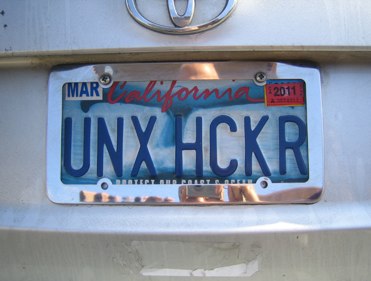
Tim Ferriss is a 33-year-old Silicon Valley angel investor, consultant, Singularity University advisor, and former entrepreneur who in 2007 published a book called The 4-Hour Workweek; in 2008 won Wired‘s “Greatest Self-Promoter of All Time” prize; and last month published a sort-of-sequel, The 4-Hour Body. His books seem roughly equally divided between really worthwhile, interesting advice and totally ridiculous crap. What’s most interesting about them is their approach. In his own bizarre yet effective way, Ferriss has become the world’s first hacker-guru. And I hate to admit it, but I must confess: I have halfway become a devotee.
The 4-Hour Body attacks self-improvement in the same way Silicon Valley startups strive for success: data-driven decision-making, A/B testing, iterative development, willingness to pivot. (Watch Andrew Keen’s TCTV interview with him). This isn’t new. A sizeable subset of the hacker community has been “hacking their body” for years, and sites like Lifehacker have grown around that approach. Ferriss, though, is the first to promulgate that ethos to the general population – and he has been wildly (and deservedly) successful. 4-Hour Body rocketed straight to the top of the New York Times bestseller list.
It helps that he’s obviously a really charmingly enthusiastic guy, and a good writer to boot. But it’s his commitment to evidence-based decisions that sold me. Ferriss can’t stop citing the science behind his conclusions, had a blood-glucose monitor implanted in his body as part of his three years of research, and writes proudly about the time he spent weighing everything that went into or came out of his gastrointestinal tract. Better he than me. I’ve known for years that I’d eventually have to start paying attention to my diet to maintain my fitness level; so my girlfriend and I decided that this painstakingly researched eating plan – an iteration from the paleolithic, South Beach, and low-glycemic diets of yesteryear – was for us.
Not that it’s just a diet book. There are sections about ultra-endurance running, optimizing the female orgasm, living on less sleep, gaining muscle, and “becoming superhuman.” (See the “ridiculous crap” caveat above.) But it’s his data-driven slow-carb eating plan that struck me most, because, well, it’s wildly effective.
I spent a day in headache-ridden sugar withdrawal at first. Who knew I was a junkie? Since the first week, though, it’s been bizarrely agreeable. Our general mood and feeling of wellbeing has improved. The mid-afternoon downbeat lull no longer hits. Judging from my weightlifting and running, I’m near a lifetime apogee of fitness. Our desire to eat bad food has diminished. I do miss beer, but wine and Laphroaig fill that void. (I have, however, not stopped eating fruit. Sorry, Tim.)
And the weight loss was startling. I wasn’t that interested – I’m not particularly thickset – but when I boarded the 4-Hour train, our fancy-schmancy scale reported that I weighed 197.6 pounds. Ten days later, after morning coffee & protein? 187.0. (For calibration, I’m 6’1″.) I assume most of the difference is water weight, but still, that part actually seems to work as advertised. I expected no less, given the the data that drove it.
I know, I know: “why are you writing about your lunch on TechCrunch?” Because my lunch is a data-driven iteration from the previous state of the art – in other words, a technical innovation. Look beyond the Valley (and its counterparts around the world) and you’ll find that approach can and will pay dividends almost anywhere.